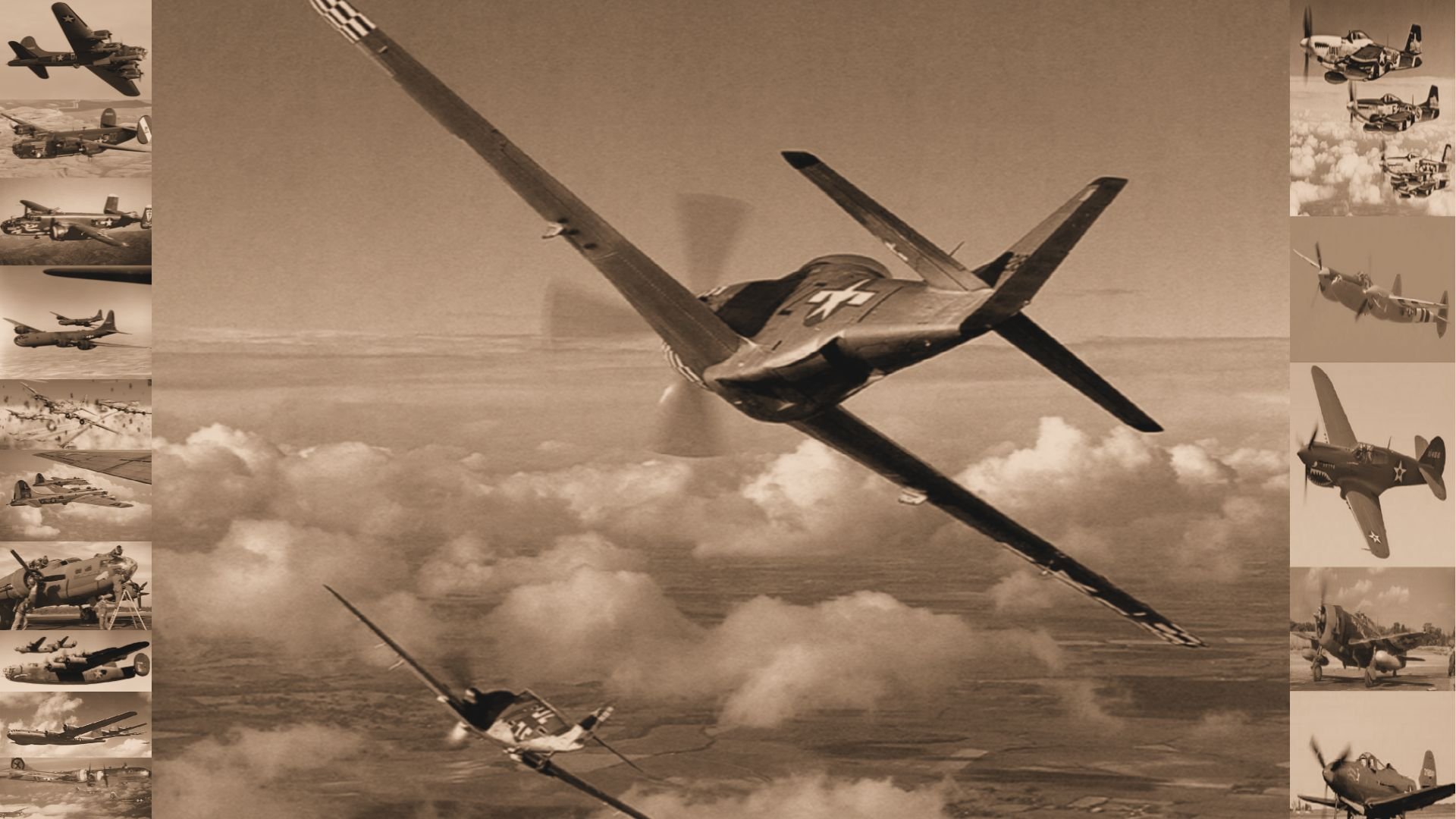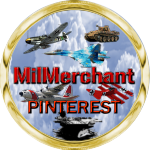 Bell P-39 'Airacobra'
Bell P-39 'Airacobra'
The Bell P-39 'Airacobra' was one of the principal American fighter aircraft in service when the United States entered World War II. The P-39 was used with great success by the Soviet Air Force, which scored the highest number of individual kills attributed to any U.S. fighter type. Other major users of the type include the Free French, the Royal Australian Air Force, the United States Army Air Corps (USAAC), and the Italian Co-Belligerent Air Force. Designed by Bell Aircraft, it had an innovative layout, with the engine installed in the center fuselage, behind the pilot, and driving a tractor propeller via a long shaft. It was also the first fighter fitted with a tricycle undercarriage. Although its mid-engine placement was innovative, the P-39 design was handicapped by the absence of an efficient turbo-supercharger, limiting it to low-altitude work. Together with the derivative P-63 Kingcobra, the P-39 was one of the most successful fixed-wing aircraft manufactured by Bell.
Back to Top
Development
The Project Officer for Fighters at the USAAC, with the Fighter Tactics Instructor at the Air Corps Tactical School, issued a specification for a new fighter via Circular Proposal X-609. It was a request for a single-engine high-altitude 'interceptor' having "the tactical mission of interception and attack of hostile aircraft at high altitude". While the first submission was for a twin engined interceptor, the second, X-609, requested designs for a single-engine fighter capable of dealing with enemy aircraft at high altitude. Also included in X-609 was a requirement for a turbo-supercharged, liquid-cooled Allison engine as well as a level speed of 360 mph and an ability to reach 20,000 feet within six minutes. The experience garnered by Bell, in the creation of the XFM-1 Airacuda, was priceless and convinced the promising team that they could develop an aircraft for the US Army's new requirement - an interceptor. Besides the Curtiss P-36s, P-40 'Warhawks' and Seversky P-35s then in service, the USAAC had very little to go on in the way of tangling with Japan's best fighters and bombers.
Although Bell's limited fighter design work had previously resulted in the unusual Bell YFM-1 Airacuda, the Model 12 proposal adopted an equally original configuration with an Allison V-12 engine mounted in the middle of the fuselage, just behind the cockpit, and a propeller driven by a shaft passing beneath the pilot's feet under the cockpit floor. This was unusual, because fighters had previously been designed around an engine, not a weapon system. Although devastating when it worked, the T9 had very limited ammunition, a low rate of fire, and was prone to jamming. The production P-39 retained a single-stage, single-speed supercharger with a critical altitude (above which performance declined) of about 12,000 feet (3,660 m). As a result, the aircraft was simpler to produce and maintain. However, the deletion of the turbo (as per Army specification changes) destroyed any chance that the P-39 could serve as a medium-high altitude front-line fighter. When deficiencies were noticed in 1940 and 1941, the lack of a turbo made it nearly impossible to improve upon the Airacobra's performance.
Back to Top
Into Service
USAAC
Pacific
With the Japanese attack on Pearl Harbor on December 7, 1941, the US Army Air Forces purchased 200 P-39s from the British order for use in the Pacific, renaming them P-400. First engaging Japanese in April 1942 over New Guinea, the P-39 saw extensive use throughout the Southwest Pacific and flew with American and Australian forces. The Airacobra also served in the 'Cactus Air Force' which operated from Henderson Field during the Battle of Guadalcanal. Engaging at lower altitudes, the P-39, with its heavy armament, frequently proved a tough opponent for the famed Mitsubishi A6M2 'Zero'. Also used in the Aleutians, pilots found that the P-39 had a variety of handling problems including a tendency to enter a flat spin. This often was result of the aircraft's center of gravity shifting as ammunition was expended. Though found unsuitable for use in Western Europe by the RAF, the P-39 saw service in North Africa and the Mediterranean with the USAAF in 1943 and early 1944. Among those to briefly fly the type was the famed 99th Fighter Squadron (Tuskegee Airmen) who had transitioned from the Curtiss P-40. Flying in support of Allied forces during the Battle of Anzio and maritime patrols, P-39 units found the type to be particularly effective at strafing.
Back to Top
Soviet Air Force (VVS)
The P-39 flew one combat mission with the British before the RAF shipped 200 aircraft to the Soviet Union for use with the Soviet Air Force(VVS). The Airacobras already in the UK, along with the remainder of the first batch being built in the US, were sent to the Soviet Air force. Employed by VVS, the P-39 was able to play to its strengths as most of its combat occurred at lower altitudes. In that arena, it proved capable against German fighters such as the Messerschmitt Bf109 and Focke-Wulf Fw190. In addition, its heavy armament allowed it to make quick work of Junkers Ju87 'Stukas' and other German bombers. The P-39 made many-an ace for the Soviet Air Force where air-to-air battles along the Eastern Front typically unfolded under the optimal 10,000 feet ceiling limit of the Airacobra. Initial P-39 deliveries to the Soviet Union arrived with the British-selected 20mm Hispano-Suiza nose cannon while later models came with the more potent American-endorsed M4 37mm cannon - the latter adjustment making quite a difference. However, losses were still high. Of those P-39s flown by the Soviets, 1,030 were lost in combat. A total of 4,719 P-39s were sent to the Soviet Union through the Lend-Lease Program and the P-39 remained in use with the Soviets until 1949.
Back to Top
Italy
In June 1944, the Italian Co-Belligerent Air Force (ICAF) received 170 P-39s, most of them -Qs. A total of 149 P-39s would be used: the P-39N for training, while newer Qs were used in the front line. On 18 September 1944, 12° Group's P-39s flew their first mission over Albania. Concentrating on ground attack, the Italian P-39s proved to be suitable in this role, losing 10 aircraft to German flak in over 3,000 hours of combat. By the end of the war, 89 P-39s were still at the Canne airport and 13 at the Scuola Addestramento Bombardamento e Caccia (Training School for Bombers and Fighters) at Frosinone airfield.
Australia
From July 1942, a total of 23 re-conditioned Airacobras, on loan from the U.S. Fifth Air Force (5 AF), were used by the Royal Australian Air Force (RAAF) as a stop-gap interceptor in rear areas. After serving with several squadrons for the next year, the remaining Airacobras were returned to the USAAF and the RAAF ceased to operate the type.
The P-39s were also used by Portugal and France in limited numbers.
Some 9,584 P-39 examples were made by Bell during her production run from 1940 to May of 1944.
Back to Top



